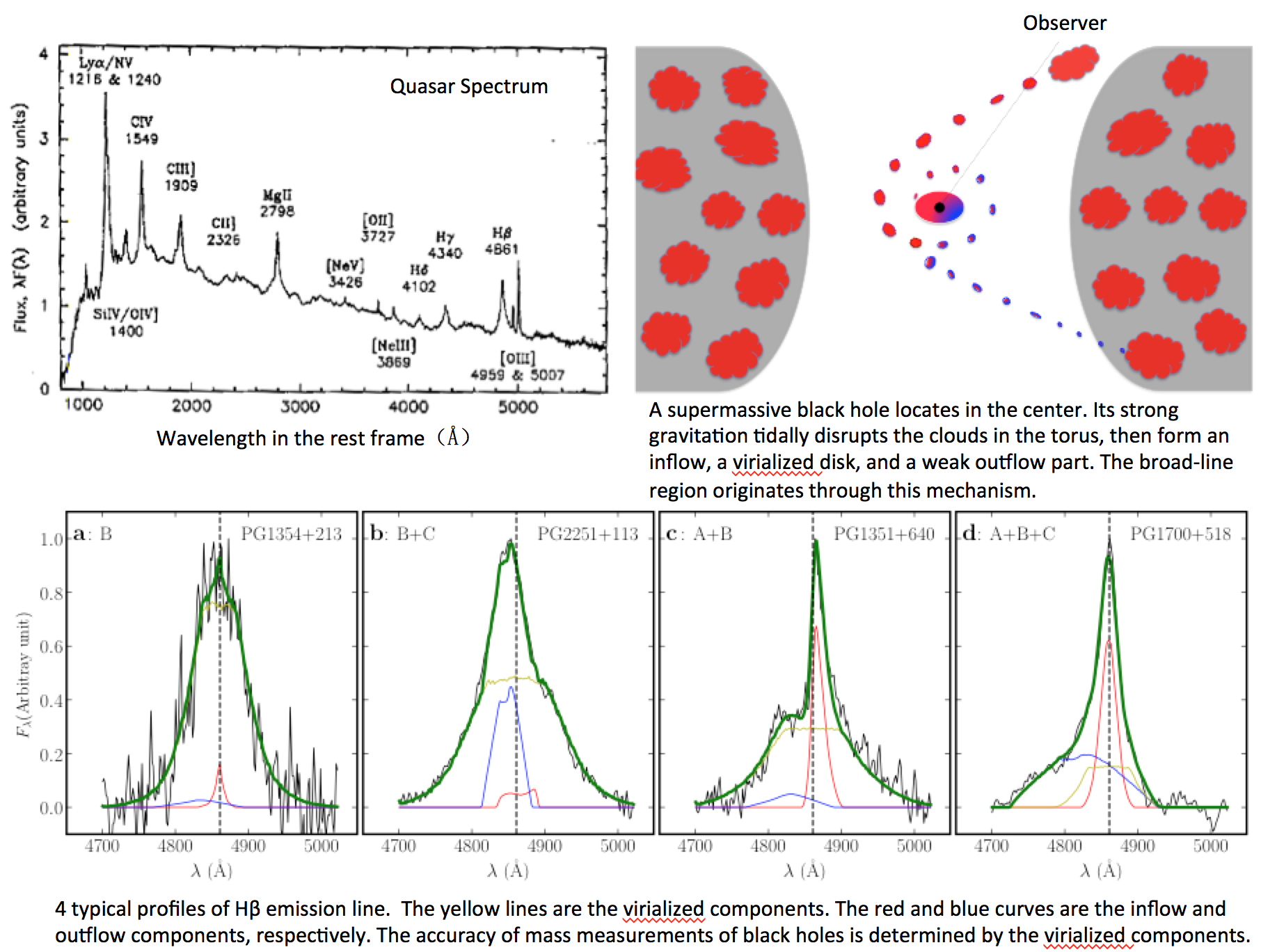Unlocking the Secrets of Broad-Line Regions in Quasars
A team led by Prof. Wang Jianmin, Institute of High Energy Physics (IHEP), has recently unlocked the secrets of broad-line regions in quasars. Their findings could lead to a huge improvement in the accuracy of black hole mass measurements.
The results have been revealed in a paper entitled "Tidally disrupted dusty clumps as the origin of broad emission lines in active galactic nuclei", published online in the journal Nature Astronomy on Oct. 9th. The members of the collaboration are from IHEP, the University of Wyoming, USA, and Nanjing University.
The team proposed a new model in which broad-line regions (BLRs) originate from the clouds in the dusty torus tidally disrupted by the central black hole (BH). The majority of disrupted clouds are bounded by the gravitation of the BH, fall and spiral in, then form the inflow and virialized components. A tiny fraction of the material is ejected and becomes outflow. The disrupted clouds are photoionized by the radiation from the accretion disk, and reradiate the observed line emission.
The collaboration found quantitatively that the three characteristics – "asymmetry", "shape" and "shift" - of emission lines significantly correlate with the torus angles. The model naturally establishes an integrated and systematic connection between different key processes and components, such as the feeding of BHs, the source of photoionized gas, and the dusty tori.
At present, the mass measurement of supermassive BHs in active galactic nuclei relies on the reverberation mapping technique. It monitors the variations of continuum and emission lines in their spectra, and determines the size of BLRs by measuring the time delays of emission lines. Combined with the measurements of line widths, this technique can be used to estimate the masses of supermassive BHs. However, due to lack of understanding of the broad emission lines and the different components in BLRs, the uncertainties of BH mass measurements are between 200% and 300%.
The model developed by Prof. Wang and his team enables decomposition of the virialized component from broad emission lines. With the help of spectropolarization observation, there are high hopes that the accuracy of BH mass measurement can be improved significantly, reducing the uncertainty to about 20%.

Contact Information
Mr.Guo Lijun
ljguo@ihep.ac.cn
